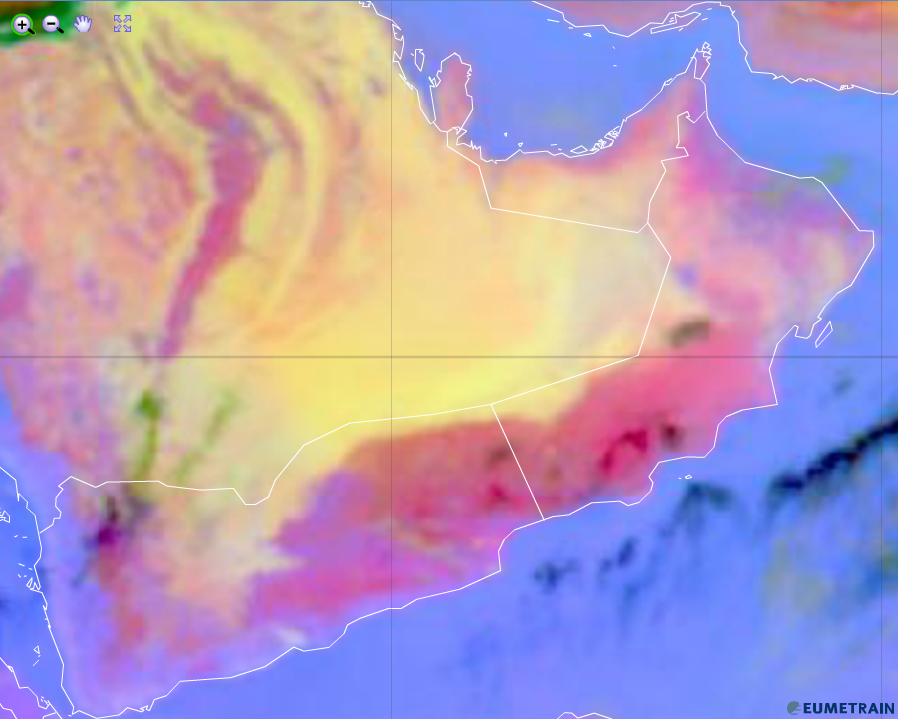Sandy deserts
Cold sandy deserts depict in a yellow colour in the Dust RGB images.
Only the red and the green colour contribute when radiantion stems from a cold sandy desert surface (red + green = yellow).
The red colour beam consists of the brightness temperature difference (BTD) IR12.0 - IR10.8. This difference is around zero over land. Given a temperature range from -4°C to +2°C, the red colour contribution is medium to high.
Sandy deserts have a much lower emissivity at 8.7 than at 10.8 micrometer. Therefore the BTD (IR10.8 - IR8.7) is largely positive and results in a high green contribution.
The blue colour contribution is minor as the surface temperature of a sandy desert during the night is very low.
The Dust RGB image below shows the sandy desert in Saudi Arabia during the night. The regions with sand (yellow) are clearly delimitted from regions with other land types like rocks, vegetation, etc (red).

Dust RGB from 14 February 2016, 00:00 UTC
Explanation of the yellow colour of a cold sandy desert in the Dust RGB (see the recipe):
In case of a cold sandy desert (e.g. night-time), only the red and the green colour beams contribute.

